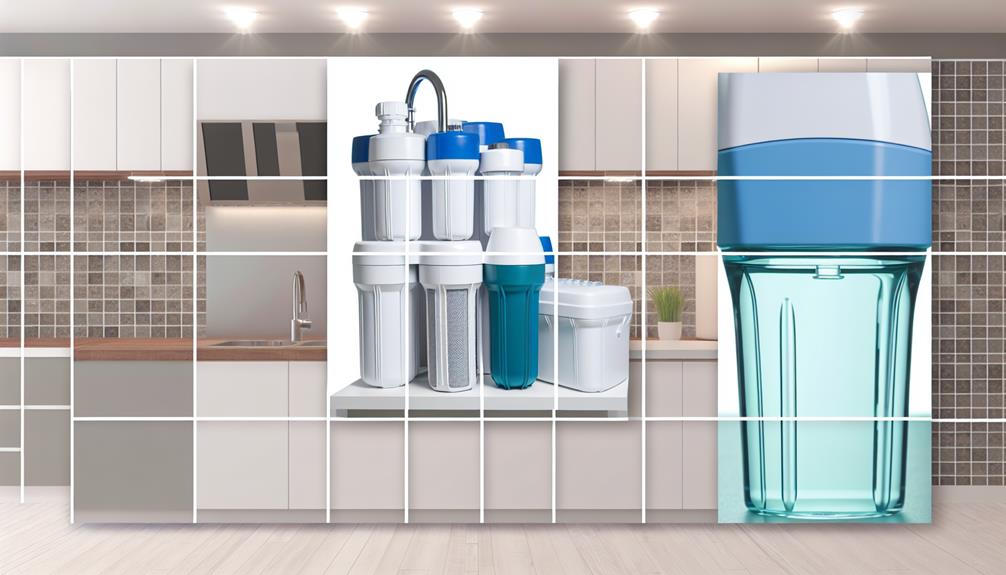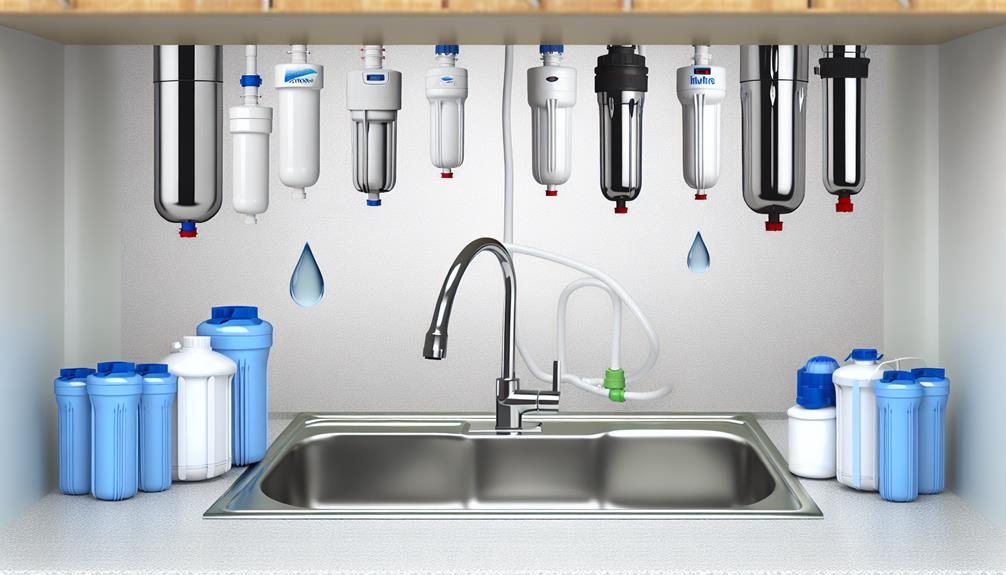In an age where aqueducts are a relic of the past and modern infrastructure dictates your access to clean water, you're faced with a crucial decision: how do you filter your water sustainably?
As you sift through the myriad of options available, you'll find that each choice impacts not just the clarity and taste of your water, but also the environment and your carbon footprint.
From ceramic filters that leverage ancient purification methods to cutting-edge activated carbon systems derived from renewable resources, the array of sustainable water filtration methods at your disposal is as diverse as it is sophisticated.
You might wonder, how do these systems stack up against each other in terms of efficiency, cost, and environmental impact?
Let's explore the nuances behind these green filtration technologies and uncover which might best suit your lifestyle and ethical considerations.
Understanding Water Filtration Basics
To effectively reduce contaminants in your water supply, it's essential to understand how various filtration methods, such as membrane, ceramic, UV, activated carbon, and charcoal systems, function to purify water.
Membrane filtration, which includes technologies like ultrafiltration, relies on a semipermeable membrane to sieve out particles, including silt and pathogens. These systems can be scaled up to a reverse osmosis system, which achieves one of the highest levels of purification, removing even dissolved salts and minute contaminants.
Ceramic filters leverage porous ceramic media, providing a portable and point-of-use solution that doesn't depend on electricity, making them an eco-friendly water filtration choice.
UV purification employs ultraviolet light to deactivate harmful microorganisms, ensuring water is safe for consumption without the use of chemicals, aligning with sustainable water filter practices.
Activated carbon block and other carbon filters use adsorption, where contaminants bind to the material's surface. These filters are particularly effective against organic compounds, chlorine, and taste and odor issues.
Charcoal filters, a subset of carbon filters made from renewable sources, can also tackle heavy metals and pesticides.
As you seek a Gravity Water Filter or another system, consider these options for their efficiency in removing a variety of contaminants and their alignment with eco-friendly practices.
Ceramic Filter Options
Building on the basics of water filtration, let's explore ceramic filter options that harness natural materials to purify water without relying on electricity.
Ceramic filters are a sustainable choice in the realm of water purifiers, offering a unique combination of efficiency and environmental consideration. These filters operate through a simple yet effective mechanism: water passes through the micro-porous structure of a ceramic filter candle, trapping bacteria and sediment.
The tiny pores are instrumental in maintaining high water quality, as they block contaminants while allowing clean water to pass through. Moreover, many ceramic water filter systems enhance their filtration capacity by incorporating activated charcoal to remove additional harmful substances, such as certain chemicals and heavy metals.
As a point-of-use or portable water filter system, ceramic options provide you with flexibility to access purified water in various settings. They're especially valuable in areas where electricity is scarce or in situations that demand off-grid solutions.
Activated Carbon Systems
Delving into the realm of activated carbon systems reveals a sustainable approach to water purification that leverages renewable materials like wood and coconut shells to trap a variety of impurities. These systems employ activated carbon, a form of charcoal that's been treated to increase its adsorption capacity.
When you use activated carbon systems to filter water, you're harnessing a natural process where the porous carbon surface removes contaminants such as chlorine, sediments, and heavy metals, while often preserving beneficial minerals.
Activated carbon's ability to adsorb organic compounds and pollutants makes it a cornerstone in water filter pitchers and other filtration devices. The material's efficiency in purifying water is matched by its sustainability; many activated carbon filters are made from recycled wood products, reducing plastic waste and environmental footprint.
Moreover, the filter lifespan of activated carbon systems is relatively long because the carbon can be reactivated. This means that once the carbon's pores are saturated with contaminants, they can be cleared and reused, minimizing the need for frequent replacements.
You'll find that using these systems not only helps to ensure clean drinking water but also aligns with eco-friendly practices by reducing waste and conserving resources.
Ultraviolet Purification Methods
Harnessing the power of ultraviolet light, UV purification systems offer a chemical-free and sustainable method to deactivate harmful microorganisms in water. When you're considering water filters to ensure safe drinking water, it's important to analyze the technical aspects of ultraviolet purification methods.
These systems don't just remove water contaminants effectively; they also promote an environmentally friendly approach to water purification.
Here are key factors to keep in mind about UV purification:
- Chemical-Free Disinfection: UV systems reduce the need for chemical disinfectants, which can lead to byproducts and potential health risks.
- Zero Waste Generation: Unlike certain filtration methods, UV purification doesn't produce wastewater, helping you reduce waste and preserve water sources.
- Versatility: Whether you need a point-of-use filter for a single faucet or a point-of-entry system for your entire home, ultraviolet purification can be tailored to fit.
- Effectiveness: UV light targets the DNA of microorganisms, ensuring they can't reproduce and cause illness, thus providing purified water without altering its taste or odor.
As you weigh your options for water filters, consider the impact on both your health and the environment. UV purification stands out as a smart choice, offering effective protection against a wide range of pathogens while being kind to the planet.
Charcoal Filtering Techniques
While UV purification offers a high-tech approach to water safety, charcoal filtering techniques provide a more traditional, yet equally sustainable method, utilizing naturally derived materials to capture contaminants. Charcoal Water filtration, particularly through the use of charcoal sticks or blocks, is a testament to the efficacy of simple, innovative materials in water purification.
These charcoal filtering techniques are often crafted from sustainably sourced wood or coconut shell, materials lauded for their porosity and adsorption capacity. As water passes over the charcoal, impurities such as lead, chlorine, and various pesticides are trapped within its complex structure. This not only helps to improve the taste by reducing chlorine but also contributes to a safer drinking experience.
Moreover, the longevity of these filter cartridges means that you won't be replacing them as frequently, which in turn, helps in reducing your carbon footprint. Once these filters remove their fill of contaminants, they can be recycled for other uses—further minimizing waste.
It's worth noting that charcoal Water filtration isn't just a nod to the past but a forward-looking solution that aligns with sustainable living principles. By integrating charcoal filtering techniques into your water purification routine, you're opting for an environmentally conscious choice that doesn't compromise on performance.

